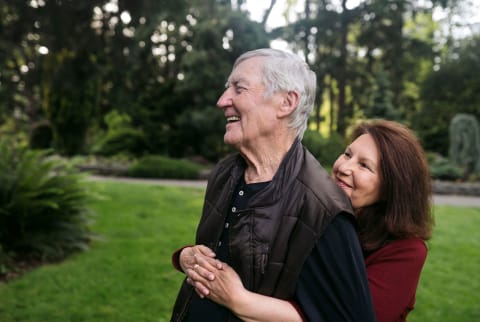Step Inside The Blue Zones Project: A Push To Increase American Longevity


In his new top-10 Netflix show, Live to 100, writer Dan Buettner takes viewers on a journey up the rugged mountain peaks of Ikaria, Greece, down to the tranquil beaches of Nicoya Peninsula, Costa Rica, to explore how the world's longest-lived people stay healthy.
Over two decades studying these "Blue Zones" (communities with an unusually high proportion of centenarians), Buettner has found that their residents are no more disciplined or health-conscious than the average person. Instead, as he writes in his book, The Blue Zones Secrets for Living Longer, "longevity just happened to them." Their environment—not their willpower—sets them up for success.
This discovery made Buettner wonder if he could create a "Blue Zones blueprint" that other communities could use to improve the well-being of their residents. The resulting Blue Zones Project proves that cities across the U.S. can become far healthier and more sustainable places to live with the help of a few simple policies.
The Blue Zone blueprint
For the first Blue Zones Project 13 years ago, Buettner and his team set out to Albert Lea, Minnesota, a small town about 90 miles south of the Twin Cities.
"Right out of the gates in the first two years, we raised their life expectancy by about two and a half years and cut health care costs by 40%," Buettner tells mindbodygreen. "We helped shed about two tons off their waistlines, and that's for a population of about 18,000 people."
A 12-hour drive away in Fort Worth, Texas, another success story comes into view. The Blue Zones Project helped reduce the average BMI and lower the obesity rate, as well as decrease smoking by 31%. These changes saved the community about $81 million per year in health care costs.
So, what's the secret to these results? Buettner points to a bundle of policies that, as he puts it "make the healthy choice the easy choice." The Blue Zones Project team has compiled dozens of such policies to present to community decision-makers. They then choose the policies that would be most feasible in their areas. From there, community members are hired and trained to execute individual projects.
An example of this is a Complete Streets strategy, which seeks to make cities more walkable and bikeable by installing bike lanes, adding green walkways, introducing raised medians to slow car traffic, etc. These changes are made only when a street needs to be redone, so it doesn't involve a total overhaul. "It's basically putting the road on a diet to make it easier and more attractive for people to walk," says Buettner.
Considering that those who walk more have a significantly reduced mortality rate1, it's not hard to see how policies like these can make any community feel a lot more like the shores of Nicoya or the peaks of Ikaria.
An unexpected benefit
In making communities more walkable, we also often make them more green. Planting trees and cultivating new parks are common items on the Blue Zones Project agenda—both of which come with important ecosystem services. They provide shade, reduce heat, buffer noise, and suck up carbon. They can also help trap pollutants and naturally filter the air we breathe.
In this way, the movement toward more walkable communities brings us one step closer to more environmentally friendly communities, too. It's no wonder that the latest Blue Zone, Singapore, is widely considered one of the world's most sustainable cities.
By rewilding urban environments, we protect local wildlife, offset some greenhouse gas emissions, and protect citizens from the health threats of air pollution2. Proof that health wins are also climate wins, and vice versa.
Looking forward
Now for the big question: Who's paying for all these changes? Buettner explains that projects are privately funded by local sponsors who have community health in mind. Nonprofit health insurers would be one example. And sponsoring projects like these isn't just the right thing to do; it can lead to serious economic gains.
"At the end of the day, you have to show an economic return," says Buettner. "The average heart attack in America costs about $120,000. If we lower BMI in a city of a million people by 1%, that means about 9,000 fewer heart attacks happened that year," netting over a billion in health care savings.
Figures like these leave Buettner hopeful that Blue Zones Projects will continue to gain traction across the country and the world. Moving forward, he says, "We need to recognize the problem, pay attention to what has succeeded elsewhere—and then go to work."

Emma Loewe is the Sustainability and Health Director at mindbodygreen and the author of Return to Nature: The New Science of How Natural Landscapes Restore Us. She is also the co-author of The Spirit Almanac: A Modern Guide To Ancient Self Care, which she wrote alongside Lindsay Kellner.
Emma received her B.A. in Environmental Science & Policy with a specialty in environmental communications from Duke University. In addition to penning over 1,000 mbg articles on topics from the water crisis in California to the rise of urban beekeeping, her work has appeared on Grist, Bloomberg News, Bustle, and Forbes. She's spoken about the intersection of self-care and sustainability on podcasts and live events alongside environmental thought leaders like Marci Zaroff, Gay Browne, and Summer Rayne Oakes.